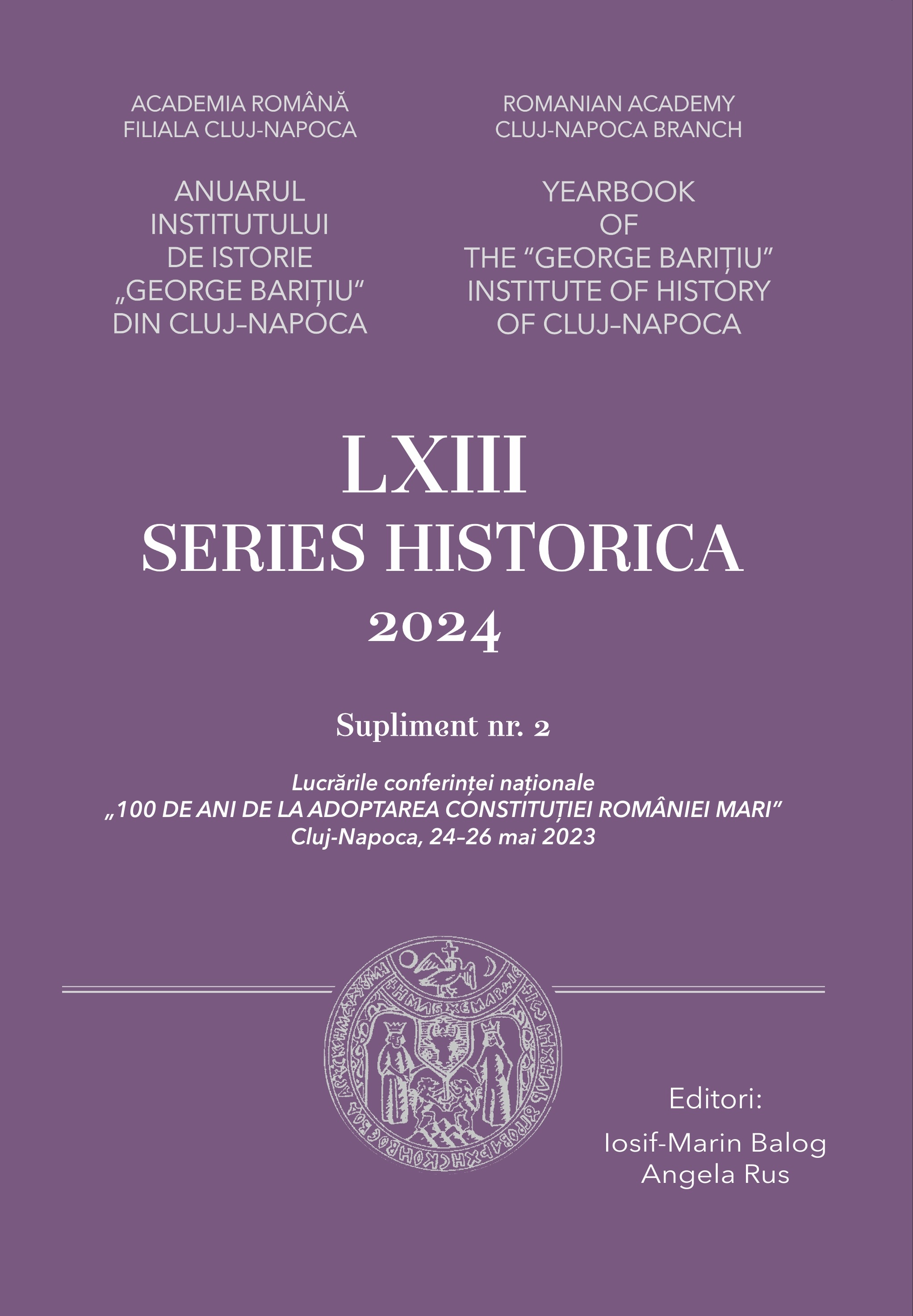Constituția din 1923 și contextul evoluției cultelor neoprotestante din România
The 1923 Constitution and the context of neo-Protestant cults in Romania
Author(s): Mihai HandaricSubject(s): Local History / Microhistory, Politics and religion, Pre-WW I & WW I (1900 -1919), Interwar Period (1920 - 1939), Prehistory
Published by: Editura Academiei Române
Keywords: Constitution of 1923; Revolution of 1948; King; World War I; Greater Romania;
Summary/Abstract: The author analyzes the context that influenced the formulation of the Constitution of 1923. It is about: the Revolution of 1948, the King as an institution, World War I and Greater Romania formed after 1918. Understanding the context helps us to understand the role that the constitution had in the development of neo-Protestantism in Romania. The revolution of 1848 opened the horizon of Romanians to the ethnic and religious situation on the continent. The ideas brought by the young people who studied in Europe contributed decisively to the union between Moldova and Wallachia in 1859. On June 29, 1866, the first Romanian constitution came into force, considered one of the most modern of the time, inspired by the Belgian constitution. During this period the Baptist movement developed in Germany. Gerhard Onken spread Baptist ideas in Europe, reaching Romania as well. The first German Baptist Carl Scharschmidt settled in Bucharest in 1856. In 1863 the German pastor August Liebing established the first German Baptist church in Bucharest. King Charles I was the reason for drafting the constitution of 1866, from which 78 articles were taken in the 238 of the Constitution of 1923. The royal dynasty supported Catholicism, with experience in interfaith coexistence. Another decisive factor in the drafting of the constitution was the end of the First World War, which led to the union of Romanians from Transylvania, Bucovina and Bessarabia. This change required the drafting of a constitution that would defend the rights of citizens of different ethnicities and religions. The Constitution of 1923 is the first major document that enshrines the phrase „Greater Romania” for the new state formed in 1918. In 1919, the Baptists formed the Union of Baptist Churches in Romania. In 1922 the Pentecostal confession appeared. Although the interwar totalitarianism affected the application of the constitution, it nevertheless had a decisive role in the defense of the individual's ethnic and confessional rights. The dictatorship established in 1930 decided to replace it with a new constitution in 1938.
Journal: Anuarul Institutului de Istorie »George Bariţiu« - Series HISTORICA - Supliment
- Issue Year: LXIII/2024
- Issue No: 2
- Page Range: 55-82
- Page Count: 28
- Language: Romanian

